Meeting the demands of the telecommunication industry: Cable solutions from Prysmian
Previously, we looked at how the telecom industry is changing. In our latest blog, Ian Griffiths, Global R&D VP – Telecoms Business, takes a closer look at some of the Prysmian products and solutions tackling this challenging landscape.
There is an ever-increasing demand for fibre optic broadband due to the dramatic rise in people moving towards a more digital way of working and living. This shift is causing a surge of fibre optic installations. In many cases, this is leading to congestion in the carrier duct infrastructure. So, what can we do to tackle this challenge?
We need to utilise the current duct space – pack more fibres in the same space – and we can do this by developing smaller cables with higher fibre counts. This is known as densification. Densification creates a high fibre density network, which leads to a lower Total Cost of Ownership (TCO) and is more sustainable. This brings us to the question of what products and systems can aid the densification process.
Products and solutions
One solution to this is the Sirocco advanced microduct cables. Prysmian has developed two new ranges of microduct cables SiroccoHD and SiroccoExtreme. These cables offer very high fibre densities, which results in faster installation and significant cost reductions in civil works.
SiroccoHD Cables
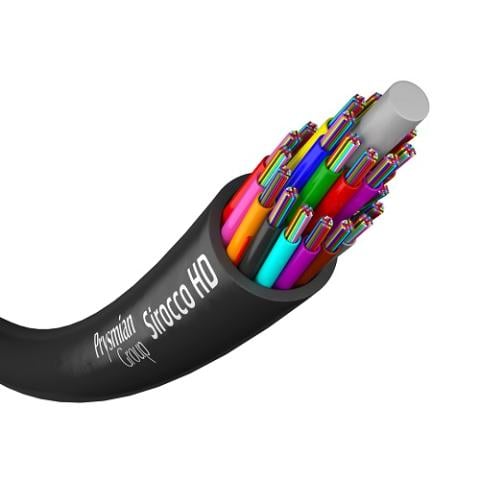
SiroccoHD cables offer unrivalled cable diameters and fibre densities for 200µm blown microduct cables. The cables benefit using Prysmian’s PicoTube technology making them up to 20% smaller than previously available microduct cables. Cables range from 96f to 864f with fibre densities up to an incredible 10.9 fibres per mm2. This makes it possible to install more fibres into a congested duct space and enables the use of smaller ducts for new installations. This results in lower installation costs and the use of less raw materials, providing benefits for both the total cost of network deployment and the environmental footprint.
Utilizing Prysmian’s BendBright-A2 200µm single-mode (ITU-T G.657.D, G.657.A2) bend insensitive fibre, they provide a solution that’s ready for evolved systems and is truly future-proof. With their extreme fibre counts and reduced diameters, SiroccoHD microduct cables make installation faster and more cost effective. They are a perfect fit for blowing in high density access, FTTx and 5G networks.
SiroccoExtreme cables
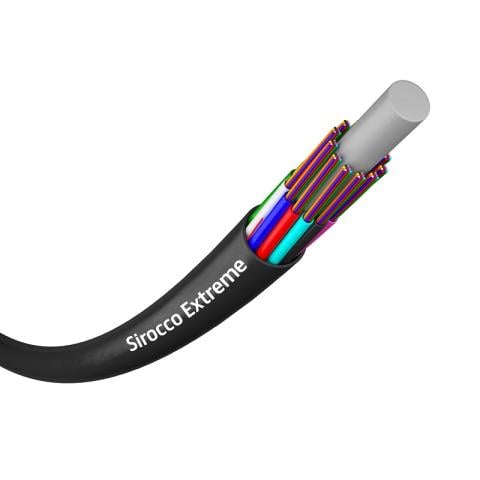
SiroccoExtreme cables combine with BendbrightXS 180µm fibre and pico tube technology for world record cable diameters and fibre densities. They are the smallest microduct cables available on the market. This is made possible as in 2019, Prysmian developed the world’s first commercially available 180µm fibre. Cables range from 96f to 864f with fibre densities up to a record breaking 11.5 fibres per mm2. Being up to 15% smaller than even SiroccoHD cables, they offer even further savings on the cost of network deployment and the environmental footprint.
The Karona Overblow System
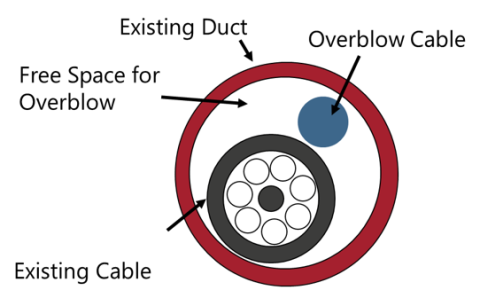
Another alternative to conventional cable installation is The Karona Overblow System. It enables the installation of high-density SiroccoHD or Siroccoextreme cables into a pre-existing sub-ducted (up to 40mm OD) route already containing a legacy cable. This system has many benefits:
-
Cost
Civil works cost typically make up approximately 70% of the cost of a new installation – however with The Karona Overblow System, this is eliminated. The cost of upgrading equipment for this process is minimal and generally the payback is one installation.
-
Lead Time
As the cable system will be installed into a pre-existing sub-ducted route, generally there is no need to apply for licences.
-
Speed
Installation is faster. When building a new duct network, a speed of 100m per day is considered fast. Overblowing is conducted at 40m/min.
-
Environmental Impact
Using this system can lead to a huge reduction in energy as no waste is created or needs to be removed – usually in excess of 25 tonnes of CO2 per km.
-
End User Satisfaction
Having faster installation speeds, reduced lead times, and eliminated civil work, drastically reduces end-user disruption and offers greater peace of mind.
FlexRibbon
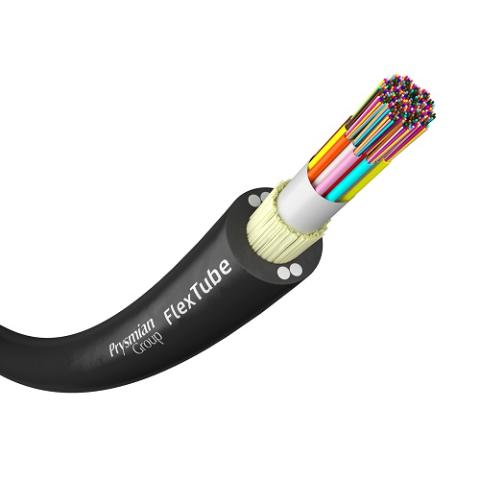
Prysmian Group’s innovative FlexRibbon cables provide the benefits of mass fusion splicing with the flexibility of individual fibres. FlexRibbon cables are ultra-high-density solutions containing 12f ribbons, which allows for 12 fibres to be spliced at a time to reduce installation time.
Unlike standard fibre ribbons which only bend in two dimensions, FlexRibbons can collapse into a group of individual fibres, which enables them to be packed tighter into cables for improved density. This also allows the fibre groups to bend in three dimensions, making them easier to coil into splice trays and handle during installation.
FlexRibbon cables are available in central tube designs and in Masslink (multi loose tube) designs. Masslink cables have all of the benefits of loose tube cables, such as a central strength member for improved bending and tensile performance. FlexRibbon cables are available in fibre counts from 144f to 6912f.
ULW Cables
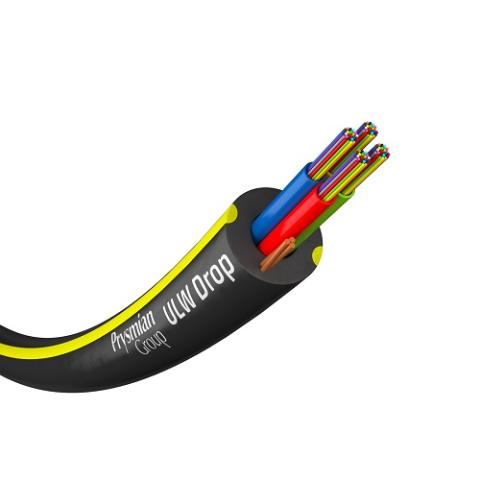
Prysmian Group also offers a range of ultra lightweight cables (ULW) that focus on the need for high reliability and help to reduce installation costs. Suitable for use under 11kV power cables, the Prysmian 96f Optical Aerial Drop Cable (ULW) is a multi-unit optical drop utilising 200µm Singlemode G.657.A2 fibres. The cable is designed for aerial and/or duct applications. Due to the dense nature of this cable, deployment is faster and more sustainable. It is available in a range of fibre counts up to 96 fibres, with different fibre types and mechanical constructions – dependant on the application.
EPFU

In addition to these cables, Prysmian manufactures Enhanced Performance Fibre Units (EPFU), which are specifically designed for blown fibre applications in smaller ducts of 3.5mm ID. The fibres are contained within a soft inner acrylate layer which cushions the fibres, an outer harder layer which protects the fibre from damage and a low friction layer that assists in improving blowing distances up to 1000m (or 750m for a 12 fibre unit. This solution provides flexibility, with the ability to easily remove pre-installed fibre units and replace them with higher fibre count units at a later date.
To summarise, Prysmian Group is able to meet the demands currently facing the telecoms industry with its wide range of solutions, and continuously evaluates the market to ensure it stays ahead of the game.
As well as providing an extensive range of fibre optic cables for every environment, Prysmian Group offers a wide range of connectivity solutions that cover all cable management needs, whatever the network type. Learn more about these in our next blog…
Prysmian Telecoms: Linking the future
Prysmian Group is helping to link communities, continents, and countries faster and more efficiently than ever before.
Learn more about Prysmian Telecom solutions and discover the full project range.



